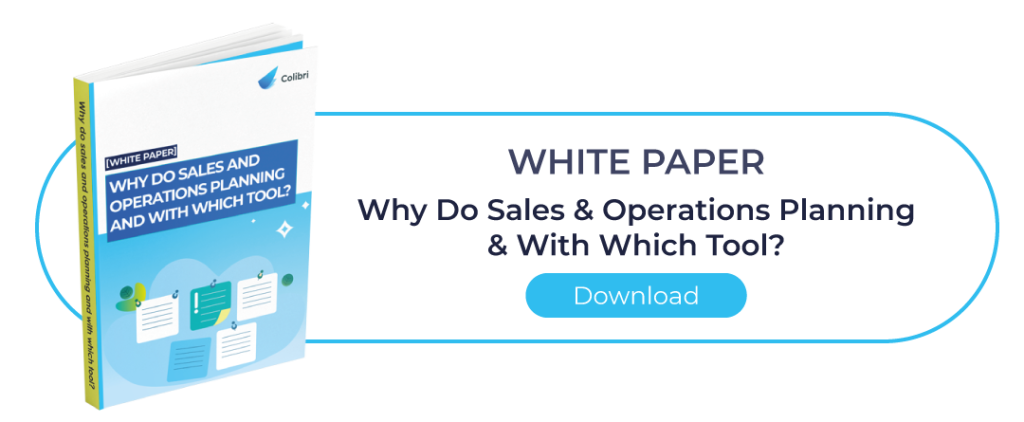Maintaining sufficient cash flow is a significant challenge for companies. It ensures financial balance, optimises liquidity, prevents the risk of bankruptcy, and improves investment capacity. All these elements provide the smooth running of the company. One indicator should be monitored closely to improve cash flow: the working capital requirement (or WCR), of which stock is an essential element… Optimising your stock means freeing up cash. Let’s take a closer look at the different levers you can use!
Inventory management: what impact on the company’s cash flow?
Inventory management and working capital: what you need to know
The WCR is a key figure in the business world. A figure that indicates the money that a company needs permanently to finance its operations and matches the cash flow gap resulting from current activity.
Building up working capital is essential for businesses for several reasons.
Incoming sales will cover both the cost price and the expected margin. However, in practice, the company usually must incur preliminary expenses before receiving its revenue.
For example, it will have to pay its suppliers before selling. This permanent cash flow gap between the company’s expenditure and income constitutes the working capital requirement (WCR).
Among the elements that impact the WCR is the company’s stock. This item corresponds to purchases of goods or materials already made that are waiting to be sold or used in production. Clearly, the greater the company stock, the greater its WCR. Therefore, this indicator should be monitored closely.
Overstock: a hidden cost that can be harmful to the company’s cash flow
On the one hand, it’s important to ensure enough room for manoeuvre to answer demand and its variables effectively. But on the other hand: you must be careful to avoid overstock! Between raw materials, production and storage, overstocking can be costly for companies! And part of the cash flow is tied up until the products are sold.
Another problem with overstocking is the risk that the company that has stored products or raw materials becomes obsolete or out of date. Similarly, some stored products may never be sold. The company may then be exposed to significant financial losses.
Inventory reduction: a solution to improve cash flow and free up investment capacity
The good news is that there are several ways in which you can improve your cash flow and thus free up investment capacity.
- Optimise supplies. To do this, make sure you order at the right time, anticipate, maintain good communication with your suppliers, and don’t forget to renegotiate prices if necessary.
- Watch out for bad debts and avoid them at all costs. You will regain liquidity through debt collection.
- Keep a close eye on your stocks. This lever is often neglected. However, by reducing and optimising stocks, you will improve the WCR and thus free up cash flow!
Stock management presents several issues, two of which are: customer satisfaction and financial strategy. Indeed, in case of stock shortage, the service rate drops: the customer has only two choices. Either wait for the product to be made available or purchase from a competitor. Conversely, if the stock is too high, the company gives up the fixed cash flow.
How to reduce stocks to improve cash flow
The launch of the replenishment calculation is automatic (daily or weekly) and considers the set up made by the planner. The
It’s up to you to find the balance and define a global strategy between the different functions concerned. Several criteria should be taken into account:
- Obsolescence. This directly impacts unsold products, and to reduce this risk, sales and their variability by product category must be forecasted more efficiently. It’s also necessary to plan batch sizes consistently to minimize obsolete products’ financial burden.
- Use the ABC method. This helps identify the least profitable references. The ABC method gives you a more focused approach to reducing costs and maximising profitability.
- Maintaining a good level of safety stock. Mitigating all types of risks such as shortages or longer production times, the safety stock is necessary for the smooth running of the company. This safety stock level should be adjusted according to the nature of the products, the variability of your sales, and the hazards of your operations.
- Improve forecast reliability. Reliability is a key indicator when making sales forecasts and must be optimised. This way, the risks of overstock and out-of-stock situations will be avoided. To improve the reliability of forecasts, you can, for example, work with exceptions or opt for a dedicated collaborative tool, such as the Colibri software.
- Adopt a global approach or S&OP process. Situations of non-communication and non-collaboration between different departments directly impact the company’s performance. To avoid these pitfalls, all departments must work together towards a common goal. Therefore, make sure you adopt an overall strategic approach or S&OP process. This will help you align business functions and make coordinated, consistent decisions on inventory management and cash flow targets.
An efficient stock management policy allows you to avoid over-stocking and out-of-stock situations while reducing “dormant stocks”. The result: you improve your cash flow and free up investment capacity!
To help you optimise your stocks, adopt a collaborative tool such as Colibri. Colibri is a new generation S&OP solution that combines different technologies to improve supply chain processes. The result: better stock visibility and the ability to implement a 360° strategy. Do you have a project or maybe just a question? Contact us now!







